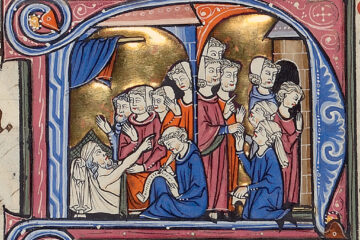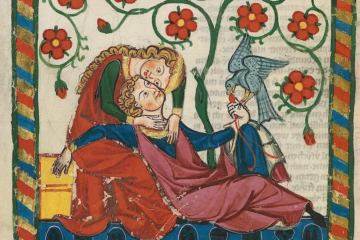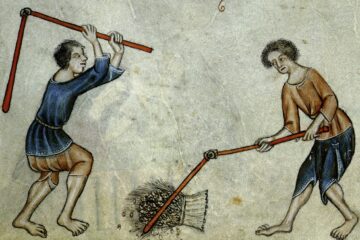by His Holiness, Pope Alexander I
Songs sing of ancient empires like England or Rome, however today there are few in number. One of them would be the Sirius Empire, which gets its name from Torrino I “the Founder” of the Sirius dynasty. His family line can be traced back to Charlemagne himself, one of Europe’s most influential monarchs of the past.
Before there was an empire in these lands, there were 4 petty kingdoms: Deston, Late Munrich, and East and West Egirth.
Egirth
After the plague, the rough area of Egirth split into as many as 10 squabbling duchies, which claimed sovereignty over this area. One of them, named Rosefell, managed to conquer three others by the year 1060. The same year saw Count Andrey I, crowned King of Egirth, much to the dissatisfaction of the other Dukes. Seeing his rival crown himself King, Duke William of the Pock, also claimed the Egirthian throne in the same year. By the year 1065, there were only two Kingdoms, East and West Egirth. 1065 also saw the “First Egirthian War for the Throne”, when the Eastern forces attempted to take Rosewood in late March. Their troops laid siege to the city for 42 days, but their hold on the city was broken by General Robbert of Northkeep. The fighting lasted for 4 months before a white peace was signed, seeing as neither side could make progress. The second, third, and fourth wars came in various intervals up until 1072, when Pope Alexander I crowned Brandon, son of William, King of East Egirth. Tensions rose, and a diplomat was dispatched to regulate the situation. In a rather humorous turn of events, the diplomat, young Torrino, was found out to be the heir to the lands of Charlemagne. In a show of fealty, King Andrey III bent the knee and swore allegiance to the new Emperor. After being ordered to also bend the knee, by both King Andrey and Pope Alexander, King Brandon refused. In a fit of rage, King Andrey raised his banners and rode East to end the strife once and for all, and after two years of conflict and bloodshed, King Brandon’s corpse lay beneath Andrey’s feet. The “Fifth Egirthian War for the Throne” was the last and saw the final unification of the region, with King Andrey being proclaimed ruler, and King of Egirth.
Egirth’s wealth lies in its proximity to important trade routes and its manpower which is estimated to be between 8.000 – 10.000 well-trained soldiers, as well as another 25.000 men to call into war. Egirth’s capital, Rosewood, was quoted by many to rival the beauty of Rome and even Alparis.
Deston
The lands of Deston include 7 duchies and 2 grand duchies. The most prominent one, Deston, was chosen to be the capital province, with the capital being, also, Deston. The royal house, the house of Cottor, went about unifying their region much more peacefully than their eastern neighbors. Duke Damari II, developed a plot to marry all 12 of his daughters to the surrounding Dukes and Counts. When he died, in 1067 his only son, Harold, rose to his father’s rank and became Duke of Deston. By 1070 Harold had inherited five duchies and four counties. The same year he crowned himself King of Deston, forcing the two remaining Dukes to vassalage.
Deston owes its success to its rich soil and vast farmlands. Today it contributes the most to the Imperial Granary, up to 67%. It has a high dependency on foreign trade nodes, most of which pass through Egirth. They field 5.000 trained men in their army and can muster up 15.000 plebs to fight in wars. Deston as a city is just below Rosewood in terms of beauty but surpasses it in terms of population.
Late Munrich
Munrich is geographically superior to the other Kingdoms of the Empire, as it has mountains as natural shields against invasion. Those same mountains were responsible for preserving its dynasty, the house of Wisser. The plague hit Munrich hard, with most of its population dying because of it. After 1059 the kingdom started to rebuild and reorganize. Most of the common folk cheered for their King as he emerged from the mountains, and crowned his son, Thomas, King of Munrich. His rule was characterized by his immaturity and unfitness to rule or govern. He often wasted the Kingdom’s treasury on feasts and games. In 1064 he led the country into war against the “Lesser coalition”, a band of duchies who grouped up in order to defend each other, in the “Munrichian fool’s War”. The fighting lasted for five years before the Duchies besieged Munrich. After a month of besiegement, the King ordered all his physicians to bring all the sick to the walls. These men were struck by the plague, which once tore Europe apart, still, King Thomas thought it was a good idea to throw them over the walls at the attackers. The plan worked, too well. The attackers lifted the siege after getting infected themselves. A new form of the illness emerged and soon infected most of Munrich. Southern duchies seceded from the Kingdom and blocked their borders, urging everyone else to do the same. From 1070, Late Munrich was referred to as, Munrich. From 1070 to 1073 the Kingdom saw a shift of power from one royal house to the other, from the peasants to the military, and now it is in mild anarchy. Law is almost nonexistent, and the only “civilized” area is the capital, ruled by Ferdinand Winehouse.
Munrich’s strengths are its abundance of natural recourses as well as its position in Europe. More than ¾ of the Empire’s ore comes from Munrich. However, its weakness lies in its poor army, of only 4.500 trained men and another 5.000 men fit for duty. The capital is no special city, although it does attract foreigners and scholars who wish to study the “Second Plague”. King Thomas’ remains are lost to this day.
The Unification
The 13th December 1075 saw the coronation of Torrino I of the House of Sirius, as Emperor of the newly formed Sirius Empire. The next few months were spent in regulating the integration of East Egirth into the new Kingdom of Egirth. After that, in the year 1076, the Emperor claimed sovereignty over the lands of Munrich. Most people accepted it and welcomed the rule of law. The northern region was integrated fairly quickly, the south, however, remains untamed. The Imperial crown keeps a garrison of 2.500 Egirth men in northern Munrich at all times. Deston joins the Empire in 1079 after pressure from the Pope and Torrino. Deston was incorporated and in return was given the county of Revensdale as a token of gratitude, much to the discontent of Late Munrich. In 1080, the Empire fought its first war, against The Aqvintian Dogma. Emperor August, joined the war of the “Sirian Reconquest of South Munrich” in May 1080, when Torrino declared war on the Aqvinatian vassal. The war lasted for two years. The greatest battle happened on Christmas day in 1081 when the Sirian 20.000 strong army met the evenly matched Aqvintian army, led by Lord Marshal Fred Morning. The Sirian army had Lord Marshal James P. Sullivan, Sir Edward “the Fearless” and King Andrey III “the Conqueror”, each in control of their respective parts. The two armies faced off at dawn. Seeing their advantage, as they had their backs to the East, Lord Marshal Sullivan, ordered a charge onto the Aqvintian force. With the morning sun in their eyes, the Aqvintian vanguard had difficulties with stopping the Sirian cavalry’s charge. Their left was smashed through rather quickly, with most of their soldiers fleeing the battle. However, the Aqvintian right sent their own cavalry forward and stopped the attack, even managing to push the Sirian left. Sirian heavy infantry surrounded part of the Aqvintian center, forcing their main force to retreat. By the end of it, 8.000 lay dead, including Sir Edward. The Lord Marshal to the Sirian Empire managed to get a scar down his left eye. His forces regrouped and marched for Aqvantine, the Aqvintian capitol, and laid siege to it. The siege lasted for 134 days before the Pope intervened and forced both parties to a cease-fire. The war would end, Southern Munrich would be granted independence from their overlords, and their sovereignty would be guaranteed by the Papal State. There is an uneasy truce between the two European powers which could unravel at any moment. From that time to 1085, the Empire has been busy integrating its new lands, collaborating with Rome, reforming its military and developing trade in Egirth and Deston.


